They say travel is the best education. That might be true but it’s so easy to forget that when ones days are saturated with selfies at sun-drenched beaches, friends posing with colourful cocktails, or photos of decadent food.
Sampling local street food or exploring hidden beaches while travelling might be enriching but it’s the tales of local people, experiences of village elders, and communities that stay with us for the longest time.
The Killing Fields of Phnom Penh provide such an experience – one that drives home the importance of travel in an unprecedented fashion. The entire monument bears witness to gruesome tales of torture, confinement, killing, and murder under Pol Pot’s Communist regime, popularly known as Khmer Rouge. Pol Pot was a communist revolutionary who ruled Cambodia between 1975-79. He believed in an extremist form of agrarian socialism which idolised peasants. His government forced city dwellers to relocate to the Cambodian country-side and felt no qualms in penalising anyone who couldn’t slave away in the fields, wore glasses (signifying academic leanings as opposed to fondness for hard labour), or had soft hands.
But the punishments were no ordinary punishments. Every day, hundreds of people were forcefully transferred from cities to the countryside and most of them were killed on one pretext or another. The audio tour at the Killing Fields of Phnom Penh narrates many such horror stories.

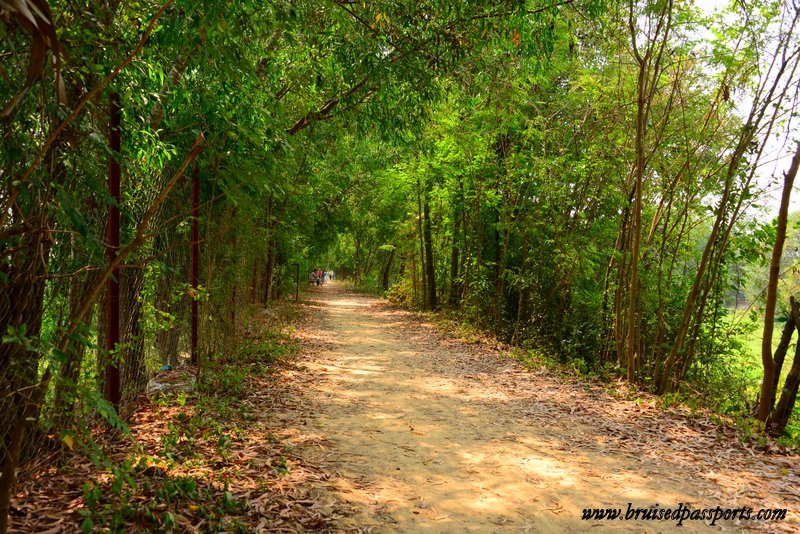
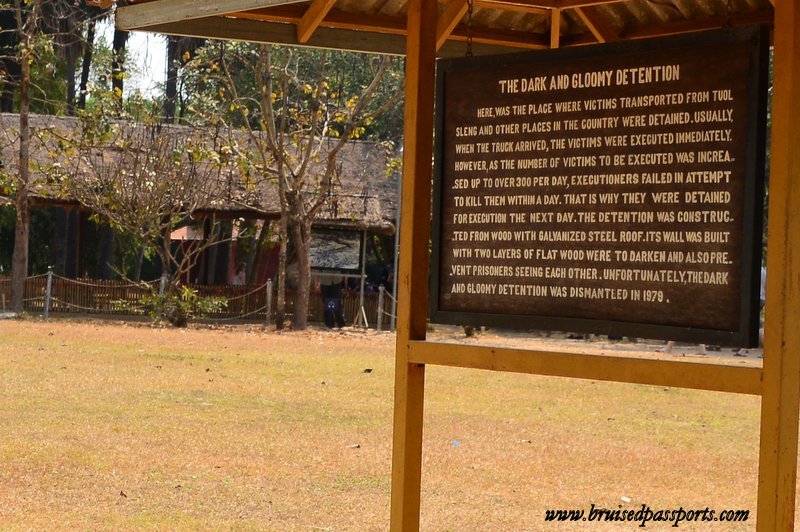

Sloganeering was frequently used by Polpot’s soldiers to demoralise victims – ‘Better to kill an innocent by mistake than spare an enemy by mistake‘ and ‘To keep you is no gain, to lose you is no loss‘ are just a couple of the propagandist slogans that were used. Victims were nailed and hacked to death with machetes, saws, and axes because bullets were too expensive. Their babies were grabbed by their legs and smashed against trees till they died because Polpot did not want them to grow up to take revenge for their parents’ deaths.
Propagandist songs were played on loudspeakers to drown the cries of the dying people. Even today, visitors can listen to the nightmarish cacophony produced by generators, songs, and the cries of victims at the Killing Fields in Phnom Penh.
The Cambodian Genocide, unleashed by Polpot, remains one of the scariest chapters of World History and the fact that it is so recent, makes it even scarier. 25% of Cambodia’s population (over 2 million people) was wiped out in less than 4 years and these horror stories about open graves, decaying bodies, and stench of dead bodies come alive at The Killing Fields in Phnom Penh, Cambodia. Bones, clothes, and teeth still occasionally appear at the mass graves here and serve as a stark reminder of the violence that was unleashed on innocent Cambodian nationals.
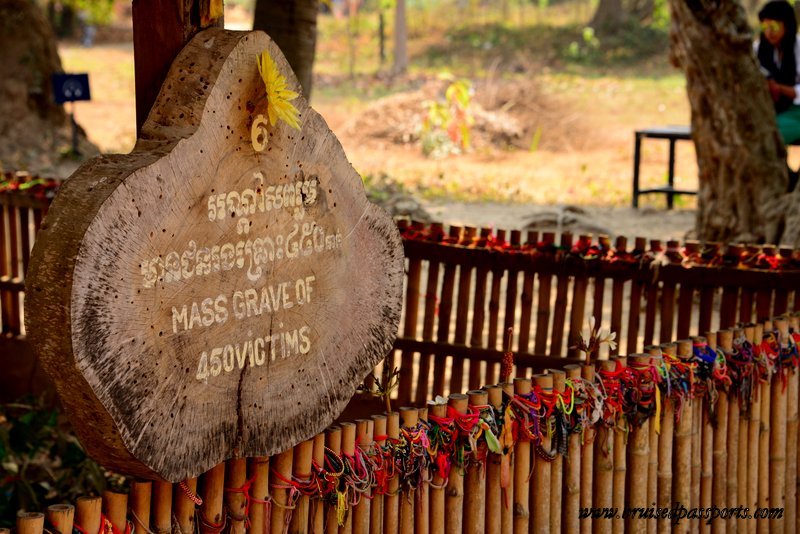
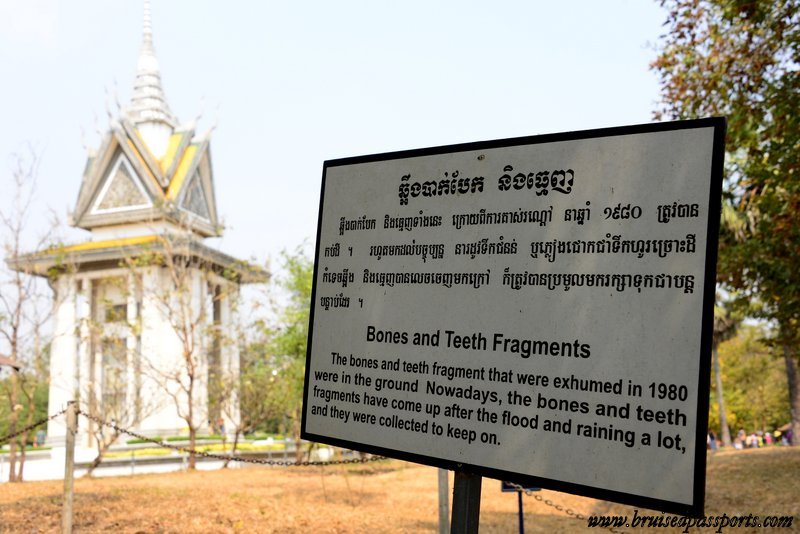
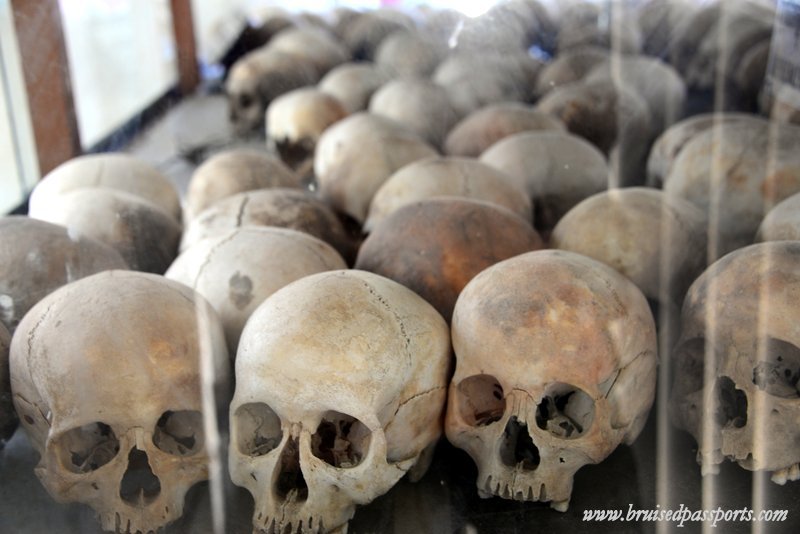

Every once in a while, travelling throws a history lesson in your face – one that is hard to ignore. The hours spent mulling over the gruesome bits of history we experienced at The Killing Fields forcefully reiterate the importance of travel. No history book could have ever impacted us the way this visit to the Killing Fields did. The haunting images of Cambodia’s bloody past will stay etched in our memory forever, forcing us to question homogeneity and embrace difference at every step of our lives.
FACT FILE
- Visiting the Killing Fields of Phnom Penh should definitely be on your itinerary of Cambodia
- The entry fee for Killing Fields of Phnom Penh is $6 (as of February 2014). This includes an excellent audio tour.
- These fields are only 1 of 300 Killing Fields in Cambodia. Most of them are inaccessible, lost, or surrounded by land mines.
- It’s best to apply for a Cambodian Visa online. The process is hassle free and costs around £55 if you decide to go through an agency.
Want to experience something similar to The Killing Fields in Europe? Read about our day at a Nazi Concentration Camp in Germany
Are you planning a trip to Cambodia? Make sure you consult our list of 10 Must Visit Angkor Temples
.



You guys did your homework before heading to Cambodia, these tours look great, we didn’t make it to phnom penh, maybe next trip.
Haha yeah we did – to be honest, there isn’t much to do in Phnom Penh besides a trip to the Killing Fields.
I’m going to mail you for sure before planning my trip to cambodia. This is gruesome and gross place 🙁 But yeah , The history for sure .
History fascinates me ( Forts in india /Angkor temples/wall of china )Kapil and I can travel a long way to see some very old fort or temple.
But for sure then there are this kind of things which are depressing , But i surely would like to see it.
In my wishlist , Like the lust list you guys have. I want to see all the seven wonders of the world.
Hey Sonal – please feel free to drop us an email when you plan your trip to Cambodia. As for the 7 Wonders of the World, we hope you get to see them soon. Happy Travels 🙂
This is the history I do not wanto vist.. Super spooky.
Hats off to you guys for visiting and showcasing such places..\m/
Thanks Rashmi. I guess these are the ways in which travel teaches one to strive to be a more well-rounded and thoughtful individual 🙂
Fascinating post. This is a place that I would really like to visit. It’s heartbreaking but it’s history and that’s a really important part of travel and culture.
Absolutely Sara – it’s an experience!!
This was absolutely devastating. You did your duty by visiting and telling us about this place. Many of us probably don’t know how crucial things were in Cambodia. Thanks for the reminder and I’ll be doing my further research. We must constantly remember these stories to never repeat them again.
Absolutely Matin – we hope you make it there someday. It’s one of those places that stays with you forever!
Woaahaa!! That looks super scary! You really have to be strong to witness this.
Thanks for the informative post. Wow, I didn’t know a lot about the Khymer Rouge but it is truly shocking. I will definitely be visiting when I go to Cambodia next year.
Katie we’d love to hear how it went for you – just thinking of that place gives me the shivers!
Hey..we are planning a trip to Cambodia…can you help me with the iteniery and also which other destination we can add along with Cambodia?
Thanks
Hey Dimpi – you can combine a trip to Cambodia with Vietnam. You can read our articles on Vietnam here https://www.bruisedpassports.com/category/vietnam. You should put Siem Reap on your itinerary for Cambodia. Read our article about it here: https://www.bruisedpassports.com/category/cambodia
Hi Savi and Vid,
I am Gauri from Bangalore, India.
First of all , you guys are doing great job ! Congrts for that 🙂
I am planning a trip to Cambodia in September. With that respect would like to know should I apply visa on arrival or online? What you suggest, please let me know
Thanks Gauri – we applied online for our visas for Cambodia and it went seamlessly 🙂
Hey, lovely stuff, I have been following you since long and being a traveler myself, just love the feel in your travel tales.
I am planning to visit Cambodia in June. Plan is Siem Reap (3 nights), Phnom Phen ( 1 or 2 nights) and Sihanoukville (3 nights), are these many days enough? My biggest concern, safety.. is it safe or anything that I should keep in mind?
TIA 🙂
Hey these should be enough. Don’t worry, as long as you’re not stupid, it’s absolutely safe. Just keep the usual precautions in mind (as you would when you travel anywhere or for that matter when you’re in your hometown too)